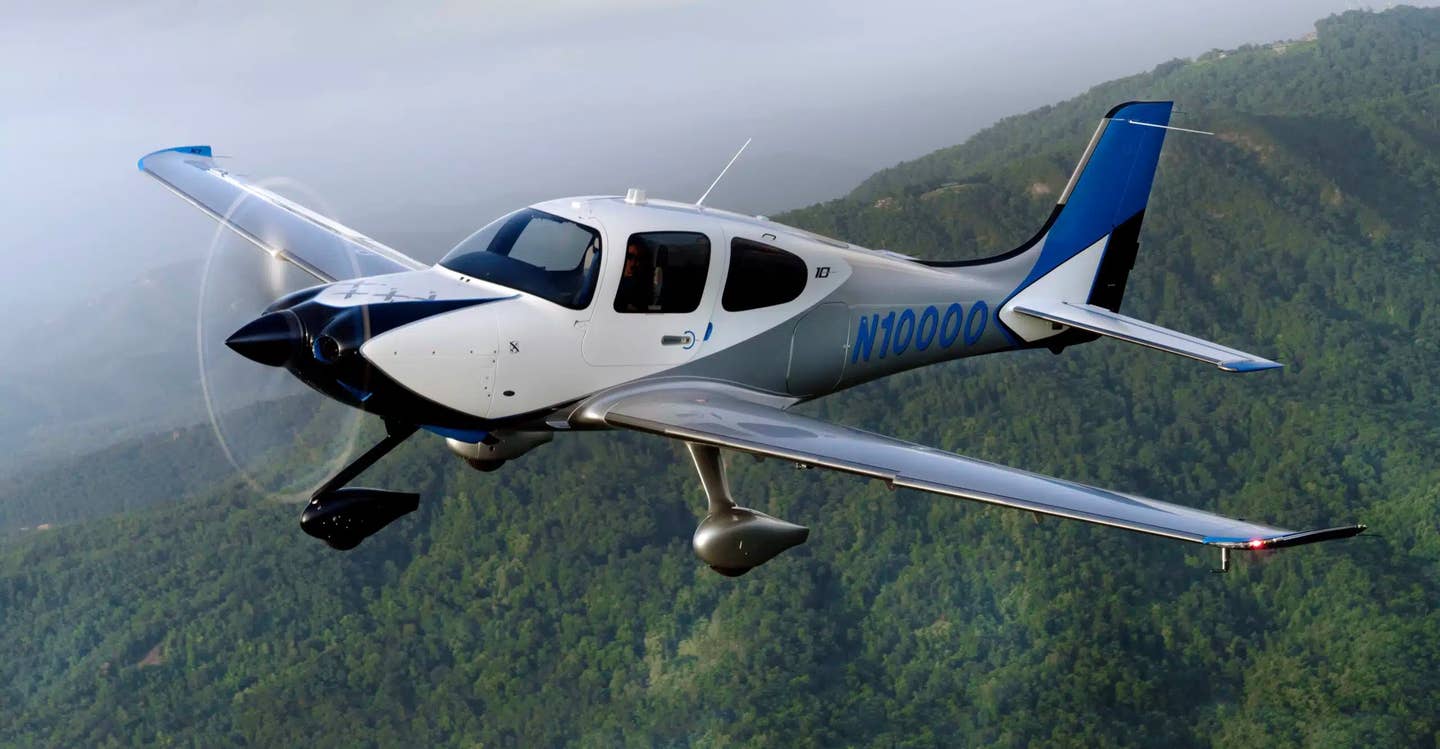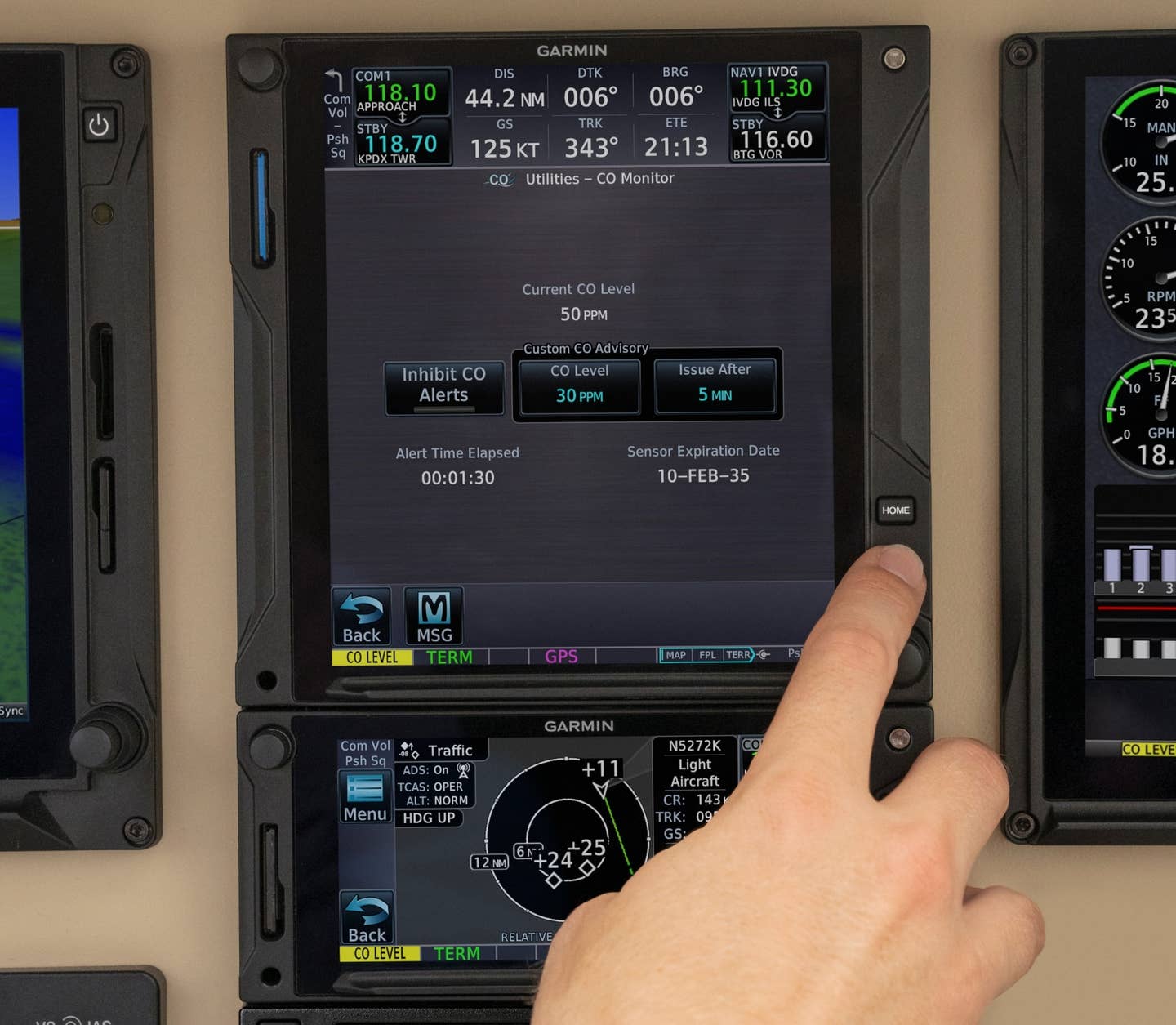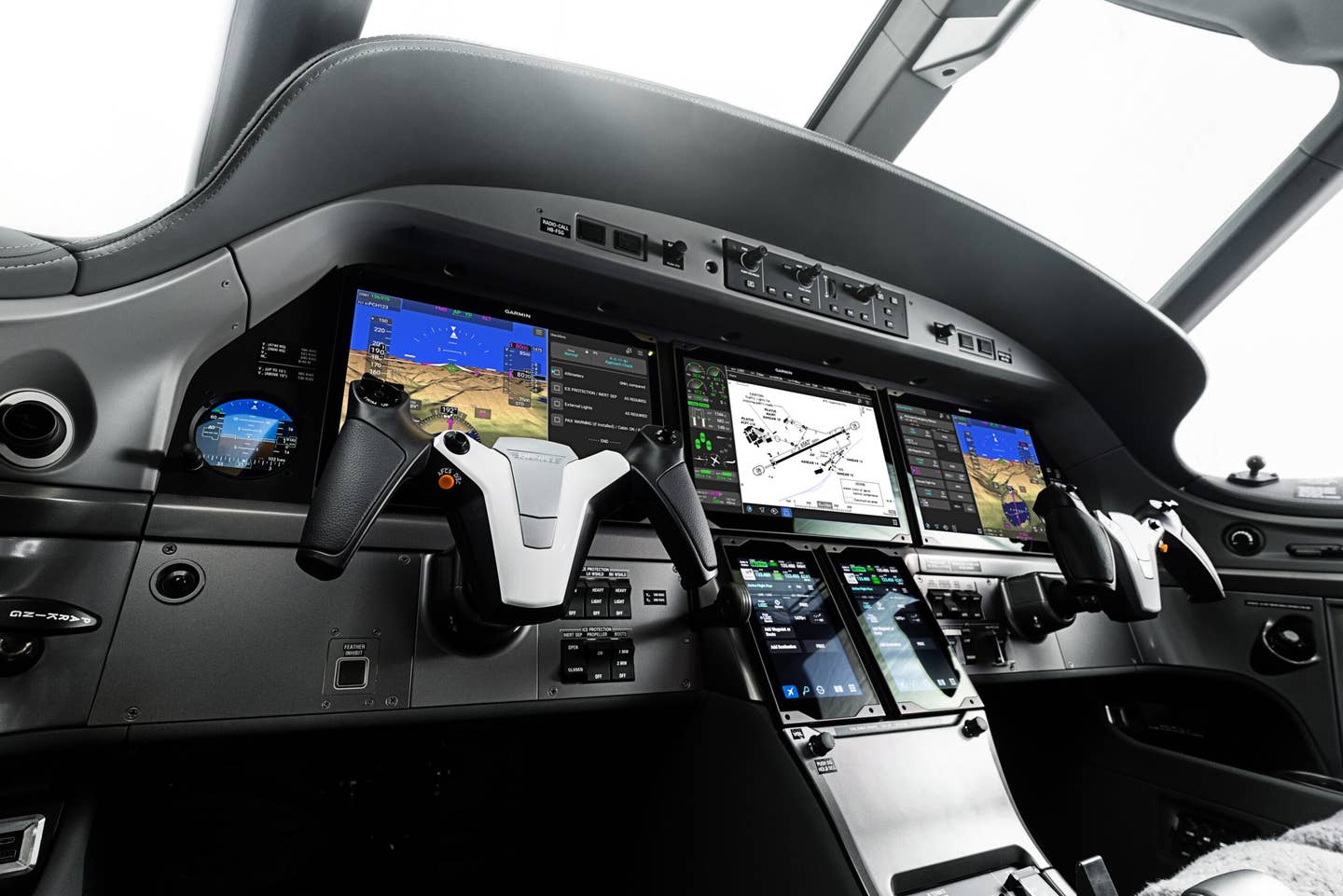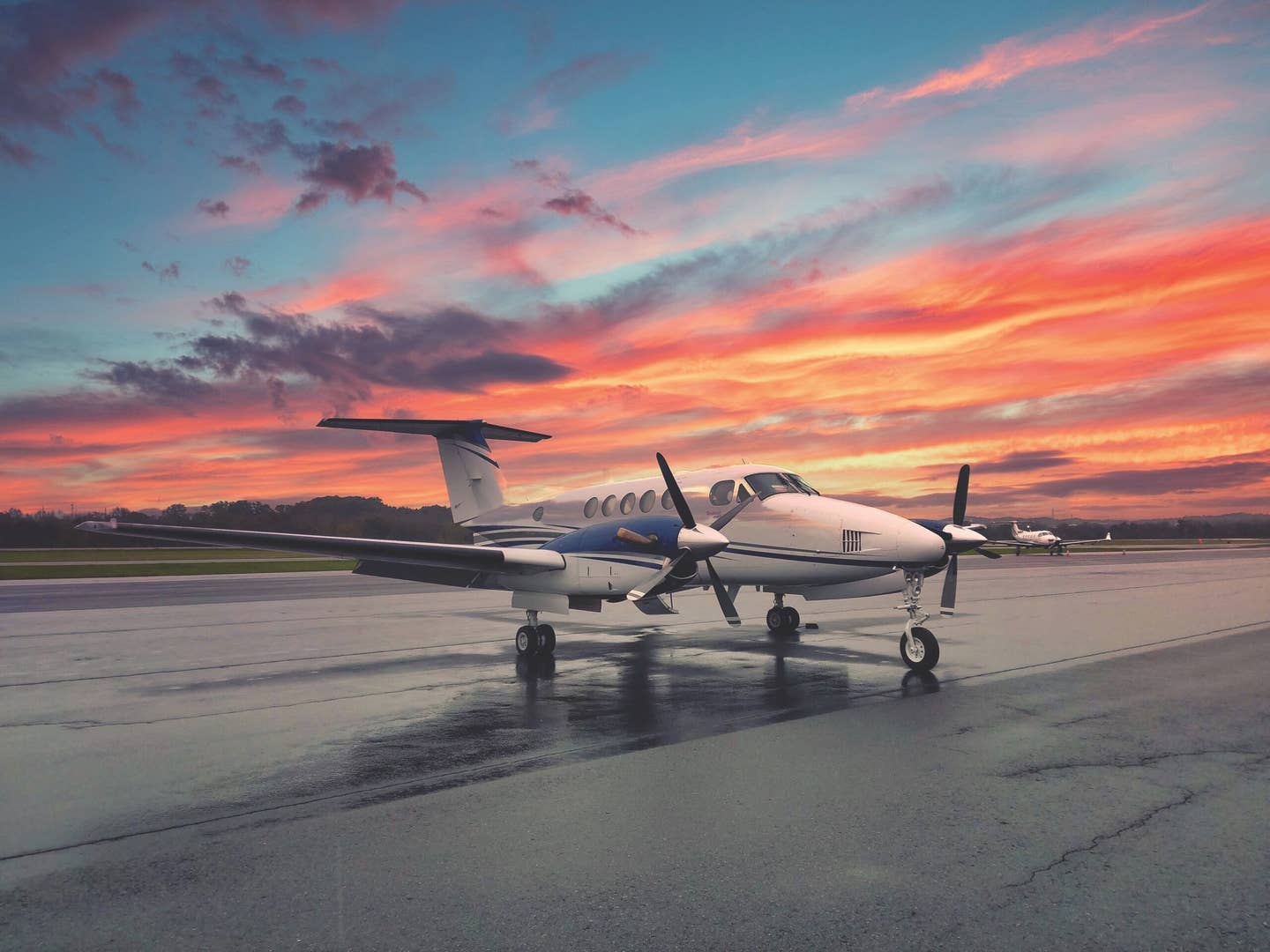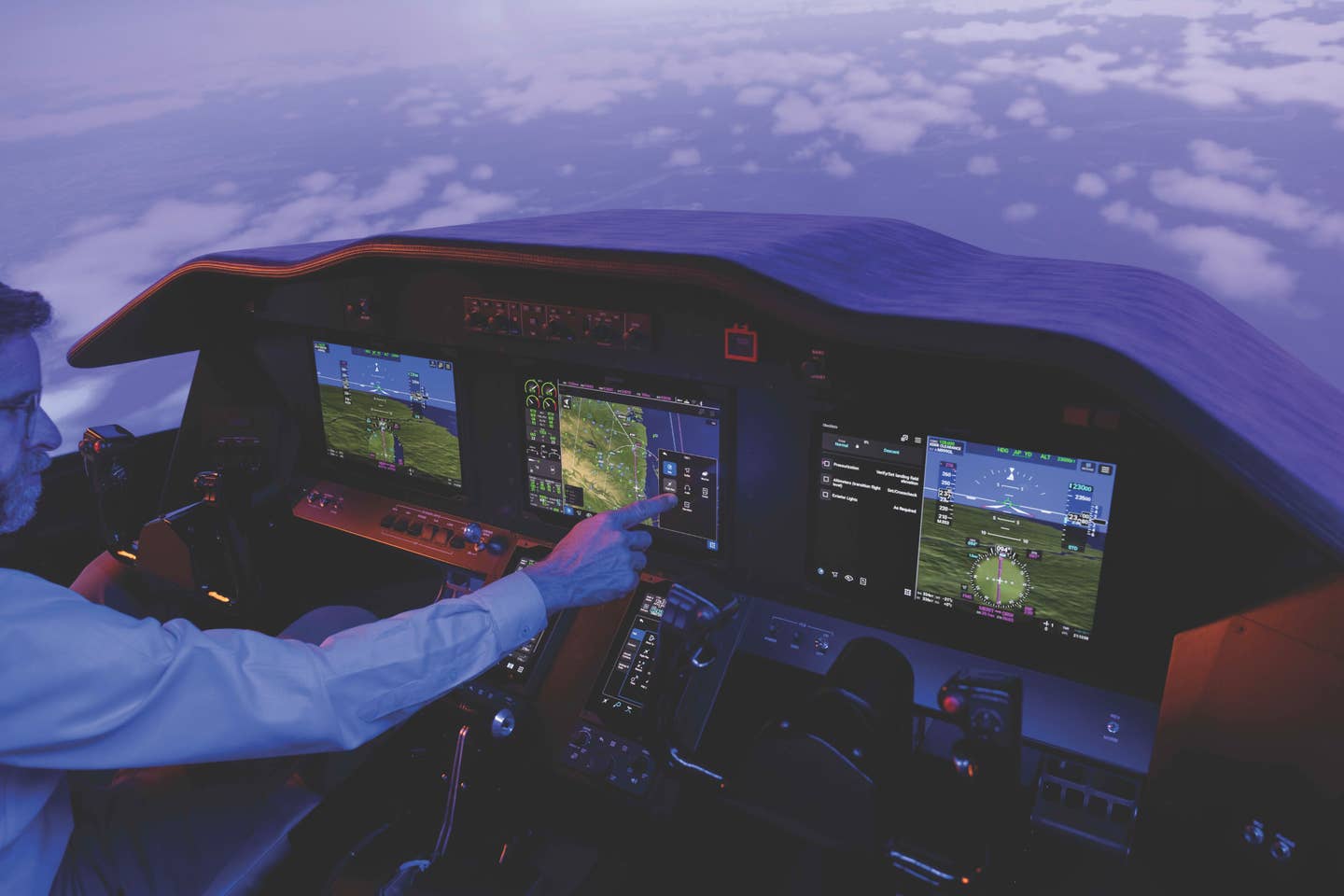
** Dynon’s latest, the SkyView 3.0, features
synthetic vision — plus a G-meter, which was
an added feature based on homebuilder
requests.**
(February 2012) The first time I climbed into the Remos G-3 it was for my Sport Pilot discovery flight. The "shiny" Dynon Avionics glass and Garmin GPS, navcom and radio did not go unnoticed as I scanned the panel. "Wow, this Sport Pilot stuff is cool," I thought. Especially since prior to this flight I had been flying in an older Piper Cherokee Warrior. The stalwart trainer was outfitted with mechanical gauges and older navcom equipment.
Most of us know by now that the advent of the Sport Pilot/Light Sport Aircraft rule seven years ago spurred the production of new airplanes, S-LSA, that offered modern technology and performance. Thanks to the technology advances of the day and the fact that the ASTM standards that "govern" LSA (see last month's column, "ASTM and LSA") currently don't include design and performance for certain equipment, many of the airplane manufacturers could install glass, for instance, or offer these advances as options to the standard panel, with virtually no red tape.
That being the case, I couldn't help but wonder if these avionics were the same as those that go through the rigorous certification process required by the FAA for standard-category light airplanes like a Piper Cherokee, Cessna 172 or Cirrus SR22. The equipment that goes into this type of aircraft must be signed off with a Technical Standard Order (TSO) by the FAA. A TSO is a minimum performance standard that gives the manufacturer authorization for the design and production of "specified materials, parts and appliances" (such as avionics). In essence, a TSO is a blanket approval process for aviation goods.
Under current ASTM standards for LSA, it’s up to the airplane manufacturer to decide what particular piece of equipment it wants to install in which airplane.
Where allowed, the manufacturers can opt for non-TSO’d avionics (some, like transponders — think about it — must be “TSO’d”). So why choose non-TSO, when permissible?
Who better to ask than the two manufacturers of the avionics in the Remos? Dynon has been producing avionics for the Experimental and LSA markets (aka sport aviation market) both in Europe and the United States since 2003, beginning with introduction of its EFIS-D10. Garmin specifically began targeting the sport aviation market in 2009 with introduction of its G3X EFIS, though the market has been using its navcoms and portable GPSs from the beginning.
According to both manufacturers, the short answer to “why?” comes down to time, money and the freedom to innovate. Companies can produce and sell non-TSO’d equipment at a price point that is more affordable than TSO’d equipment. And precisely because manufacturers don’t have to spend the time and money required to put it through a lengthy FAA certification process, they can be more innovative with the features they add.
The long answer is more involved, however, explains Robert Hamilton, Dynon’s director of marketing and sales — involved because some would argue that the non-TSO’d products found in many of today’s S-LSA, for example, are innovative, high-quality and proven because they’re based upon products that experimental homebuilders had been installing into their creations and flying in the field for years prior to the advent of LSA.
“We can more quickly build upon an existing product to create a new one, from adding new technology like synthetic vision to incorporating an innovative feature homebuilders want to see added,” Hamilton says. “A TSO’d product could take years to get approval.
“SkyView 3.0 grew from our D10/D100 line of products, adding improvements like engine monitoring, HSI and autopilot over the years. We knew we were going to add the synthetic vision, but sometimes other new features, like the G-meter, are based strictly upon homebuilders’ feedback.”
(It would do well to note here that ASTM standards currently don’t exist for software and database updates to non-TSO’d avionics either. As a result, manufacturers such as Dynon can offer software and database updates for much lower costs and often even free.)
Longtime avionics manufacturers like Garmin are leveraging their industry experience from designing and producing FAA-certified products to produce non-TSO’d products.
Take Garmin's GPSMap 496.
“The portable 496 doesn’t meet the FAA’s HIRF/lightning criteria necessary for an IFR GPS like our certified GTN touch-screen navigators do,” says Jim Alpiser, Garmin’s director of aviation aftermarket sales and marketing. “A VFR-only airplane like an S-LSA doesn’t need HIRF, so we don’t need to include that feature, which means we can offer it for less.”
As is the case with Dynon and its non-TSO’d avionics (and any manufacturer’s for that matter), Garmin has seen firsthand the time that can be saved in getting these products on line compared with those that require FAA certification.
“It took several years to get our Highway-in-the-Sky synthetic vision certified for the G1000, a TSO’d product,” Alpiser says. “We added SV to our G3X EFIS/EMS for the sport aviation market, and it only took about six months to develop and get into market.”
At the end of the day, Dynon’s Hamilton feels the quality of many non-TSO’d avionics in today’s market is comparable to that of certified products; otherwise S-LSA manufacturers and homebuilders wouldn’t buy them. That said, Hamilton admits that, because there aren’t any performance standards in place for avionics, performance can’t officially be proven other than by word of mouth by those who fly them.
Standards to Come?
That lack of equipment standards might change, however. There's currently an ASTM F37 task group working on developing design and performance standards for flight instruments, avionics and supporting equipment in LSA, says Michael Schofield, who sits on the task group and is Dynon's product manager.
“There’s a list of required equipment under the ASTM standards but no performance requirements equipment,” he explains. “For example, how accurate does an airspeed indicator need to be?”
It’s the task group’s aim, Schofield says, to fill that gap with appropriate standards that aren’t overburdensome in time and cost to the manufacturers but that offer real safety and performance benefits to users. The sport aviation industry wants to succeed, and part of that success is avoiding the extreme costs associated with manufacturing certified products.
Although the “shiny” avionics that I’ve been flying with in a Remos for more than a year now have been performing fine, I have to admit that it seems establishing such standards could only help the industry. Even if it’s just to keep others from wondering if the quality of the avionics equipment is up to snuff — or not.

Sign-up for newsletters & special offers!
Get the latest FLYING stories & special offers delivered directly to your inbox

